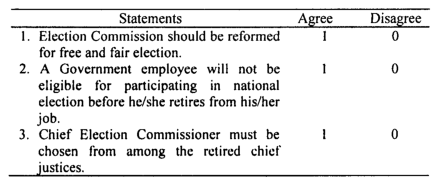Whether you are monitoring or evaluating, at some point or points, there will be a reporting process. This reporting process follows the stages of analyzing information.
You will report to different stakeholders (Board, Management team, Staff, Beneficiaries, and Donors) in different ways, sometimes in written form, sometimes verbally, and, increasingly, making use of tools such as PowerPoint presentations, slides, and videos.
A written evaluation report may be prepared in line with the following format: these are the components of an evaluation report.
- Executive summary.
- Preface.
- Content page.
- Introduction.
- Findings.
- Conclusions.
- Recommendations.
- Appendices.
The executive summary is intended for time-constraint readers but must be attractive to make people curious so that they want to read the entire report.
A preface is a place where you become courteous to thank people and make broad comments about the processes and findings.
The introductory section is designed to deal with the background of the project, the need for the evaluation, and the entire activity in a nutshell.
The findings section will accommodate the results about the efficiency, effectiveness, and impact thereof that have emerged.
The conclusions you draw will follow your findings, while your recommendations will address weaknesses, followed by what needs to be done to strengthen the programs being evaluated.
Include your Terms of References (TOR), a questionnaire used in the evaluation, and any other reference documents in the appendices that you could not accommodate inside the text.
Outline of writing an evaluation report
Here is an example of an outline of writing an evaluation report adapted from the UNICEF Guide “Program Manager’s Planning, Monitoring, and Evaluation Toolkit (2006):
| Evaluation Report: Suggested Outline Title page
Table of contents
Acknowledgments
List of acronyms/abbreviations
TOR: Terms of reference
Lessons learned
|
FAQs
Why is the reporting process essential in monitoring or evaluating?
The reporting process is crucial as it follows the stages of analyzing information, allowing stakeholders to understand the results and implications of the monitoring or evaluation.
What are the different ways to report to stakeholders?
Stakeholders can be reported to in various ways, including written reports, verbal communication, PowerPoint presentations, slides, and videos.
What are the primary components of a written evaluation report?
The main components of a written evaluation report include the Executive summary, Preface, Content page, Introduction, Findings, Conclusions, Recommendations, and Appendices.
What is the purpose of the executive summary in an evaluation report?
The executive summary is designed for time-constraint readers and should be compelling enough to make readers curious about reading the entire report.
How does the introduction section of the evaluation report differ from the preface?
The introduction deals with the background of the project, the need for the evaluation, and summarizes the entire activity. In contrast, the preface is where you thank people and make broad comments about the processes and findings.
What should be included in the findings section of the evaluation report?
The findings section should accommodate results about the efficiency, effectiveness, and impact of the project or program being evaluated.
What is the purpose of the appendices in an evaluation report?
The appendices include the Terms of References (TOR), questionnaires used in the evaluation, and any other reference documents that couldn’t be accommodated within the main text of the report.

